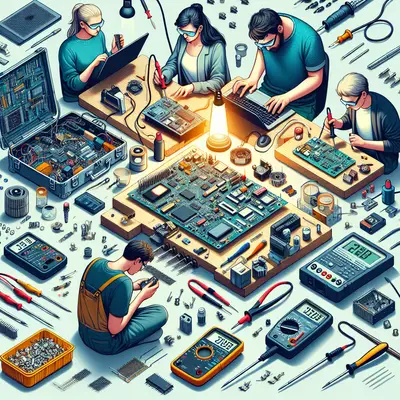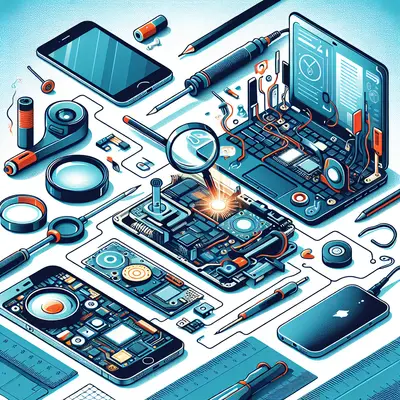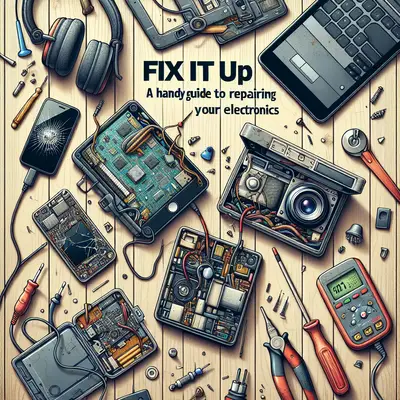So, let's dive right into the essential tools you'll need to start your home-based electronics repair journey.
Soldering Iron
A soldering iron is an absolute must for any DIY electronics repair kit. This tool heats up to melt solder, allowing you to connect components on a circuit board securely. Choose a soldering iron with adjustable temperature control to handle various tasks. Remember, working with a soldering iron requires caution, as the tool can get extremely hot.
Multimeter
A multimeter is your best friend when it comes to diagnosing issues with your electronic devices. This versatile tool can measure voltage, resistance, and current, helping you identify where the problem lies. While analog multimeters are available, you might find digital versions more user-friendly and accurate.
Precision Screwdrivers
Precision screwdrivers are essential for opening up your gadgets. Most electronic devices, especially smartphones and laptops, use very small screws that standard screwdrivers can't handle. Look for a set that includes a variety of sizes and types, including both flathead and Phillips.
Wire Strippers
Wire strippers are another essential tool for DIY electronics repair. They allow you to strip the insulation from wires without damaging the wire itself, making it easier to make connections. Choose a pair with different sized stripping holes to accommodate a variety of wire gauges.
Antistatic Wrist Strap
Last but not least, an antistatic wrist strap is a must to protect your devices from static electricity. Static can cause severe damage to electronic components, and just walking across a carpet can generate enough static to fry a circuit board. Wearing an antistatic wrist strap grounds you, preventing static electricity from building up and damaging your devices.
Conclusion
Armed with these five essential tools, you're well on your way to becoming a DIY electronics repair guru. Remember, safety first! Always unplug your devices before working on them, and take care when using these tools. Happy repairing!



